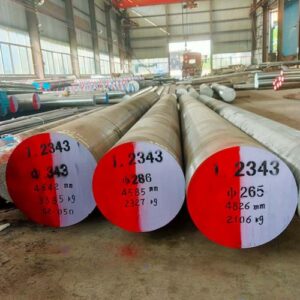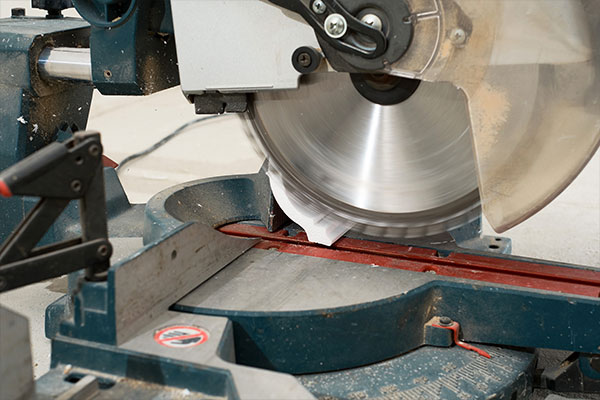Welcome to My Blog!
Before we dive into the content, I’d love for you to join me on my social media platforms where I share more insights, engage with the community, and post updates. Here’s how you can connect with me:
Facebook:https://www.facebook.com/profile.php?id=100090797846538
Now, let’s get started on our journey together. I hope you find the content here insightful, engaging, and valuable.
Table of Contents
Introduction

O1 steel is a popular tool steel known for its excellent wear resistance, hardness, and ability to hold a sharp edge. It’s widely used in applications such as knives, cutting tools, and precision instruments. However, there are many misconceptions surrounding the o1 steel heat treatment process that can lead to suboptimal results. In this blog, we’ll debunk five common myths about o1 steel heat treatment and provide you with the knowledge to achieve the best possible outcomes.
What is O1 Steel?
Before diving into the myths, it’s important to understand what o1 steel is. O1 steel, also known as oil-hardening tool steel, is a high-carbon steel alloy that contains chromium and tungsten. Its composition makes it ideal for applications requiring high hardness and durability. The o1 steel heat treatment process involves heating the steel to a specific temperature, quenching it in oil, and then tempering it to achieve the desired properties.
Myth 1: O1 Steel Heat Treatment is Too Complicated for Beginners
One of the most common misconceptions about working with o1 steel is that the heat treatment process is overly complex and unsuitable for beginners. Many people assume that achieving the desired hardness, toughness, and durability requires years of experience and advanced equipment. While it’s true that o1 steel heat treatment demands precision and attention to detail, it’s far from being an insurmountable challenge. With the right guidance, tools, and a willingness to learn, even a novice can successfully heat treat o1 steel and achieve professional-grade results.
Why This Myth Persists
The belief that o1 steel heat treatment is too complicated likely stems from the technical nature of the process. Heat treatment involves precise temperature control, timing, and specific materials, such as the correct type of quenching oil. Additionally, the consequences of mistakes—such as cracking, warping, or uneven hardness—can be discouraging for beginners. However, these challenges are not unique to o1 steel; they are part of learning any heat treatment process. With a clear understanding of the steps involved and a methodical approach, beginners can master the process and produce high-quality results.
Breaking Down the Process
To demystify o1 steel heat treatment, let’s break it down into its three main steps: heating, quenching, and tempering. Each step plays a critical role in transforming the steel’s properties, and understanding the purpose and execution of each is key to success.
- Heating: The steel is heated to a specific temperature, typically between 1450°F and 1500°F.
- Quenching: The heated steel is rapidly cooled in oil to harden it.
- Tempering: The steel is reheated to a lower temperature to reduce brittleness and improve toughness.
By following these steps carefully, beginners can achieve excellent results.
Myth 2: Any Oil Can Be Used for Quenching

Another myth is that any type of oil can be used for quenching during the o1 steel heat treatment process. This is not true. The type of oil used can significantly impact the final properties of the steel.
Choosing the Right Quenching Oil
The ideal quenching oil for o1 steel should have a specific viscosity and cooling rate. Commonly used oils include mineral oil, vegetable oil, and specialized quenching oils. Using the wrong oil can lead to uneven hardening or even cracking.
| Type of Oil | Viscosity | Cooling Rate |
|---|---|---|
| Mineral Oil | Medium | Moderate |
| Vegetable Oil | High | Slow |
| Quenching Oil | Low | Fast |
Myth 3: Higher Temperatures Yield Better Results
A common misconception about o1 steel heat treatment is that heating the steel to higher temperatures will result in better hardness and performance. This belief is not only incorrect but also potentially damaging. Overheating o1 steel during the heat treatment process can lead to excessive grain growth, which weakens the material and compromises its structural integrity. Understanding the importance of temperature control is essential to achieving the desired properties in o1 steel.
The Importance of Temperature Control
Maintaining the correct temperature is crucial for successful o1 steel heat treatment. Using a reliable furnace or kiln with a precise temperature control system ensures that the steel reaches the optimal temperature without exceeding it.
Myth 4: Tempering is Optional
Another myth is that tempering is an optional step in the o1 steel heat treatment process. In reality, tempering is essential to reduce brittleness and improve toughness. Skipping this step can result in a tool that is too hard and prone to cracking.
The Role of Tempering
Tempering involves reheating the steel to a lower temperature, typically between 300°F and 500°F, and holding it for a specific period. This process relieves internal stresses and enhances the steel’s overall durability.
Myth 5: O1 Steel Heat Treatment is a One-Size-Fits-All Process

Finally, some believe that the o1 steel heat treatment process is the same for all applications. This is not true. The specific requirements for heating, quenching, and tempering can vary depending on the intended use of the steel.
Customizing the Process
For example, a knife blade may require a different tempering temperature than a cutting tool. Understanding the specific needs of your project allows you to tailor the o1 steel heat treatment process for optimal results.
Conclusion
Understanding the truth behind these myths is essential for achieving the best results with o1 steel heat treatment. By following the correct process, using the right materials, and paying attention to detail, you can unlock the full potential of o1 steel. Whether you’re a beginner or an experienced professional, this knowledge will help you create tools and components that are both durable and high-performing.
FAQ
What is the ideal temperature for o1 steel heat treatment?
The ideal temperature for heating o1 steel is between 1450°F and 1500°F.
Can I use water for quenching o1 steel?
No, water cools too quickly and can cause cracking. Oil is the preferred medium for quenching o1 steel.
How long should I temper o1 steel?
The tempering process typically lasts for 1-2 hours, depending on the desired properties.
Can I heat treat o1 steel at home?
Yes, with the right equipment and precautions, you can successfully heat treat o1 steel at home.
What are the benefits of tempering o1 steel?
Tempering reduces brittleness, improves toughness, and enhances the overall durability of the steel.

